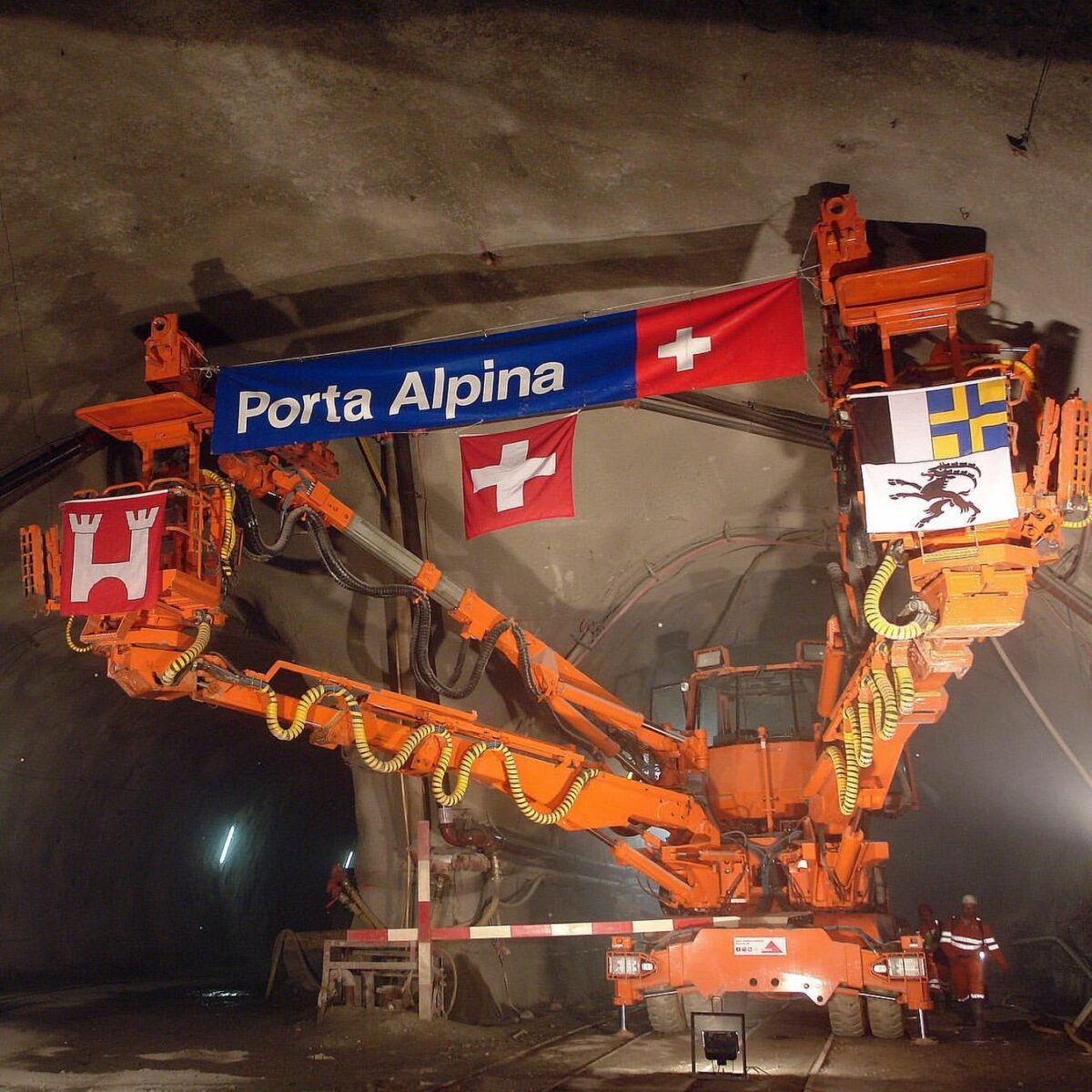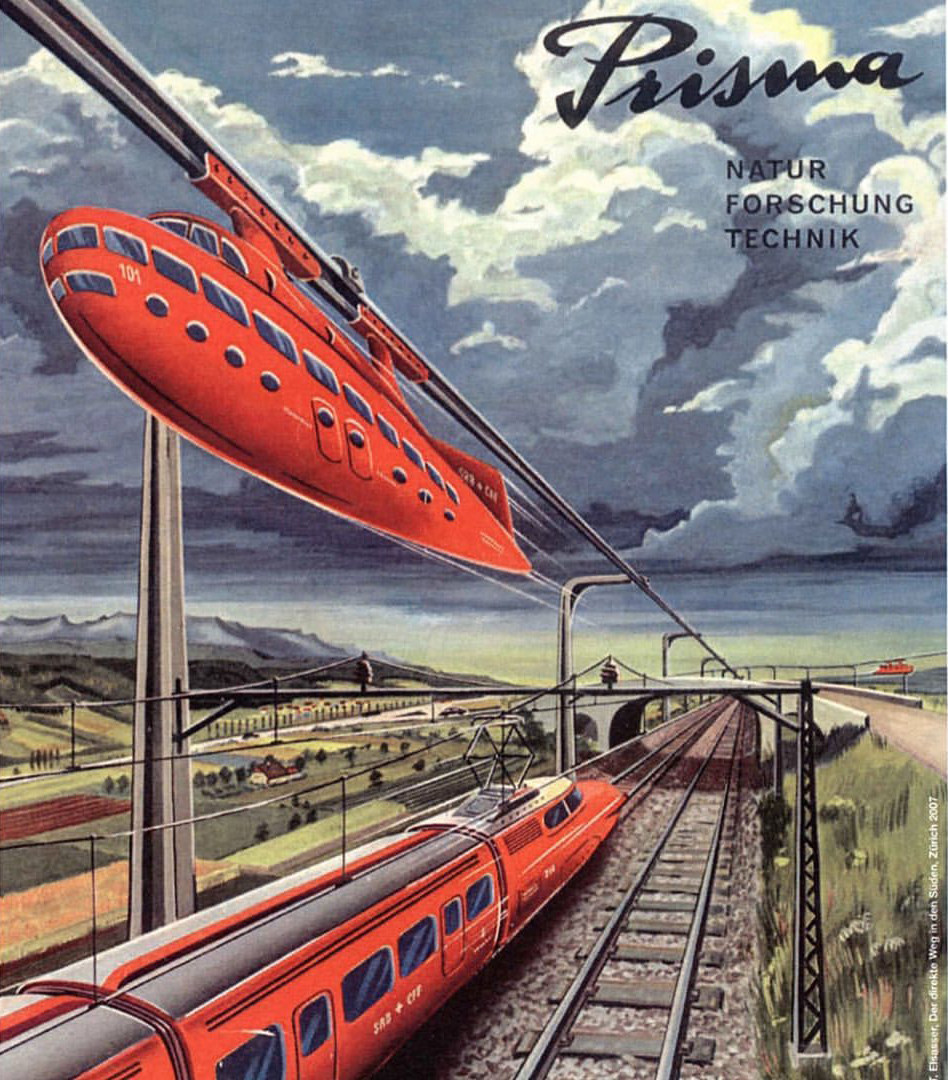
9.1
A kingdom under the mountains, or at least that’s what “Porta Alpina” was promoted as before it was unceremoniously shelved in 2012. However the story of this ambitious but doomed utopian project begins much further back, starting in the 1930s with a visionary engineer from Basel named Eduard Gruner. Gruner had the idea of building a new tunnel through the St Gotthard massif, a mountainous region in the Swiss Alps, on the border between four cantons: Valais, Ticino, Uri and Graubünden. The tunnel was to be both rail and road, or in any case allowing for both modes of transport to use it, possibly across two levels. It was to link the municipalities of Amsteg and Biasca. But more importantly, it would have an underground railway station – the deepest station ever built – in the middle of the Gotthard Base Tunnel at Sedron. This station would allow passengers to change trains underneath the alps, and in the process turn the tunnel into a tourist destination in its own right, boosting the local economy. However, despite its popularity, the project fell off the rails before it could be built. This week we’ll be exploring the history of this monumental underground project and what it can add to Switzerland’s unique history of utopianism.

9.2
Like all good utopian visions, the “Porta Alpina” station began with a proclamation for transforming the way that Swiss passengers would travel. Its creator, the engineer Eduard Gruner, published an essay in 1947 that imagined how people in the year 2000 would travel the country by trains that took them deep into the belly of the earth, under the mountains, to a great underground station where they could switch to a ski-lift for a luxurious holiday. “The train brakes gently and stops in the underground station at Sedrun where people are busy”, Gruner writes. “From there, a comfortable 830-metre-long lift takes you up to the sports venue above in seven minutes. This brings the region’s ski slopes closer to the cities of Basel, Zurich and Milan (…)”. In his mind, the train would have linked Basel to Chiasso in just two hours, making “flights in central Europe unnecessary” – putting him in good standing with the contemporary no-fly movement. But his ambitions didn’t stay within Switzerland’s borders – Gruner describes an imaginary journey aboard the “Europe-Africa Express”, a train which would connect Khartoum, Sudan to London via the underground station at Sedrun. This dream train would have been the most luxurious on the line, offering its passengers hot showers, a hairdresser, a bar and a telephone in addition to the standard restaurant car.

9.3
Sadly, the “Porta Alpina”‘s creator Eduard Gruner never got to see work begin on his utopian vision, passing away in 1984. However, his legacy remains strong, as the construction of the Gotthard Base Tunnel, which went into operation in 2016, follows a route identical to the one he designed. His underground station project, however, was doomed to a lesser fate. After being relaunched by the Swiss Federal Council in the 2000s under the name “Porta Alpina”, it sat in limbo for many years as development slowed to a halt. Despite the appeal of building the deepest railway station in the world inside the longest tunnel in the world, and popular demand for the service from travellers, it proved too much of a headache for the SFC to juggle the passenger and freight transit capacities of the railway. However, for the locals, train enthusiasts and tourists, “Porta Alpina” could have been something extraordinary — placing it in a fine company with other utopias that ended before their time.